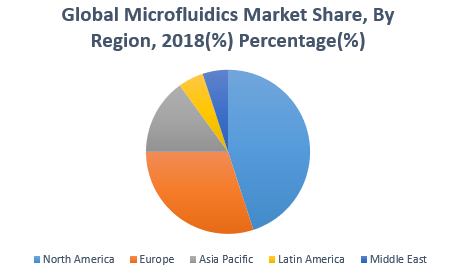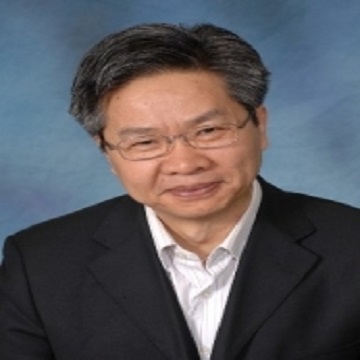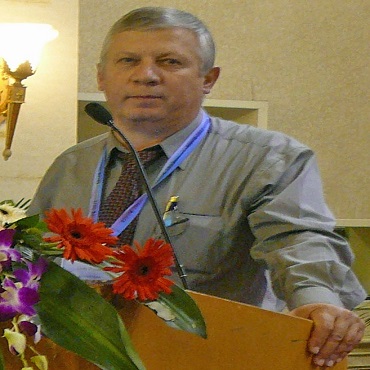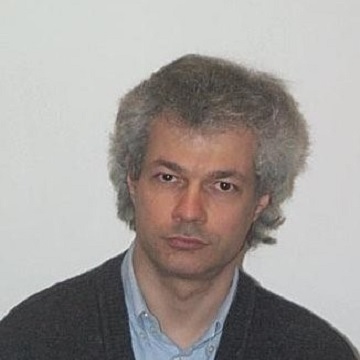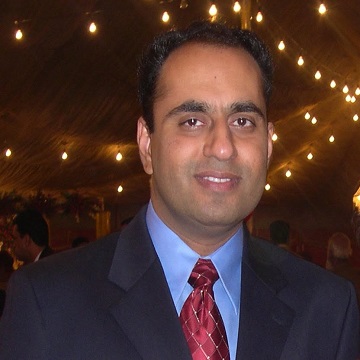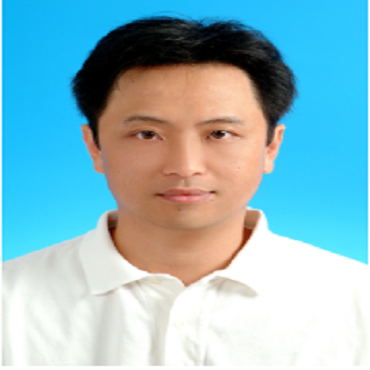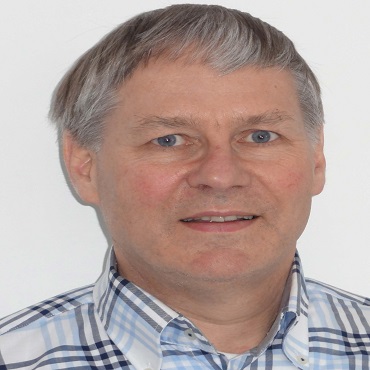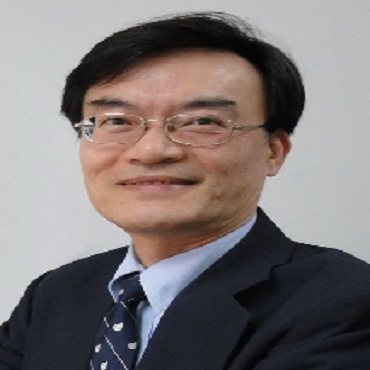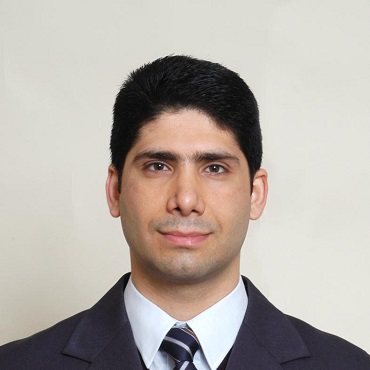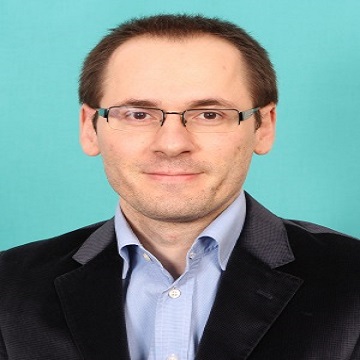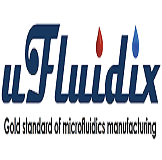
microfluidics congress
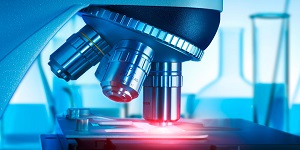
Theme: Recent Advancements and Applications of Microfluidics and Fluid Mechanics
2nd International Microfluidics Congress cordially welcomes the global audience to participate in the conference which is to be held May 23-24, 2019, Las Vegas, USA. The main theme of the conference is “Recent advancements and application of Microfluidics”. Microfluidics workshops continues being an energizing and quickly creating region in the life sciences with a persistently extending scope of utilizations.
This conference will bring together engineers, scientists, and practitioners to showcase the newest developments and discuss future directions in microfluidic technologies and their applications in complex systems, broadly defined. The topics will be wide-ranging, including chemical synthesis, separations, advanced manufacturing approaches, energy and the environment, multiphase and colloidal systems, systems biology, synthetic biology, biophysics, organs-on-a-chip, and precision medicine.
Session1: Microfluidics Research and Advances
Microfluidics identifies with outline and study of devices which move or analyse tiny amount of fluid, smaller than a droplet. Microfluidic conference deals with the advance research and its devices have micro-channels running from submicron to couple of millimetres. To compare, human hair is around 100 microns thick. Microfluidics has been highly utilized as a part of the biological sciences, controlled examinations can be led at bring down cost and quicker pace. Lab-on-a-Chip devices utilize microfluidics for applications, for example, point-of-care testing of infections, or organ-on-a-chip considers.
Microfluidics Conferences | Nanofluidics Conferences | Microfluidics Events | Microfluidics and Nanofluidics Conferences | Pharmacy Conferences | Chemistry Conferences | Nanofluidic Research
Session 2: Biosensors, Types and Biosensing Technologies
Biosensor/biosensing research involves many disciplines and therefore relevant activity tends to be distributed across various academic departments and across research groups both within and between universities. Because of this the guide is structured by academic group rather than by research activity or application area. There are various research area related to Biosensors.
- Physics
- Chemistry Engineering
- Biochemistry
- Medical Engineering
Microfluidics Conferences | Nanofluidics Conferences | Microfluidics Events | Microfluidics and Nanofluidics Conferences | Pharmacy Conferences | Chemistry Conferences | Nanofluidic Research
Session 3: Microfluidics Chip
Microfluidic chips are typically made by making thin grooves or little wells on surface of a layer, and then encasing those highlights by methods for a moment layer to shape micro-channels or chambers. Microfluidic Chip focuses on channels should be sealed in the way layers must to be properly reinforced. Contingent upon material decision, the channels are made through delicate lithography, hot emblazoning, infusion shaping, small scale machining, or carving. 3D printing might be utilized for delivering microfluidic chips, although it has genuine impediments as far as least element estimate, surface unpleasantness, optical straightforwardness, or decision of material.
Microfluidics Conferences | Nanofluidics Conferences | Microfluidics Events | Microfluidics and Nanofluidics Conferences | Pharmacy Conferences | Chemistry Conferences | Nanofluidic Research
Session 4: Bio-MEMS/NEMS and Chips
Micro-scale/Nano-electromechanical systems (MEMS/NEMS) should be intended to perform expected capacities in brief spans, regularly in the millisecond to picosecond extend. Most mechanical properties are known to be scale subordinate, subsequently, the properties of Nanoscale structures should be estimated. Bionics is the use of organic strategies and systems found in nature to the examination and plan of designing systems and present-day innovation. Bionics implies the substitution or upgrade of organs or other body parts by mechanical renditions. Bionic inserts contrast from minor prostheses by copying the first capacity intently, or notwithstanding outperforming it. Biomechanical autonomy is the utilization of natural qualities in living life forms as the learning base for growing new robot outlines. The term can likewise allude to the utilization of natural examples as practical robot segments. Biomechanical technology converges the fields of computer science, bionics, science, physiology, and hereditary building.
Microfluidics Conferences | Nanofluidics Conferences | Microfluidics Events | Microfluidics and Nanofluidics Conferences | Pharmacy Conferences | Chemistry Conferences | Nanofluidic Research
Session 5: Microfluidics in Nano-Medicine
Nano-medicine is the medical application of nanotechnology for the treatment and prevention of major ailments, including cancer and cardiovascular diseases. Medicinal workshop related microfluidic nanomedicines are many such materials fail to reach clinical trials due to critical challenges that involves poor reproducibility in large-volume production that have led to the failure in animal studies and clinical trials. Recent research using microfluidic technology has provided emerging platforms with high potential to accelerate the clinical translation of nanomedicine.
Microfluidics Conferences | Nanofluidics Conferences | Microfluidics Events | Microfluidics and Nanofluidics Conferences | Pharmacy Conferences | Chemistry Conferences | Nanofluidic Research
Session 6: Nano-Materials and Nanotechnology
Nano materials benefit from microfluidics in terms of synthesis and simulation of environments for Nano-motors and Nano-robots. Microfluidics seminars in relational to materials and technology makes easy to understand nanoparticles. In our opinion, the “marriage” of nanomaterial and microfluidics is highly beneficial and is expected to solve vital challenges in related fields.
Microfluidics Conferences | Nanofluidics Conferences | Microfluidics Events | Microfluidics and Nanofluidics Conferences | Pharmacy Conferences | Chemistry Conferences | Nanofluidic Research
Session 7: Microfluidics in Pharmacy and Biotechnology
Transforming your IVD test or pharmaceutical device into a completely designed in microfluidic product is our activity. Pharmacy workshops related to drugs delivery deals with microfluidics study, one of our key qualities is the capacity to give novel preparing solutions and in addition, the outline and assembling of a few sorts of miniaturized scale form advancements (Silicon, SU-8 and steel), the mix of miniaturized scale and full-scale highlights, mixes of process steps, testing gathering steps, stringent QC prerequisites and bundling of the last item. Microfluidics empowers procedures of Biotechnology to continue a scale (microns) at which physical procedures, for example, osmotic development, and electrophoretic-motility and surface connections wind up noticeably upgraded. Microfluidics has been connected to DNA examination techniques and appeared to quicken DNA microarray test hybridization times. The connecting of microfluidics to protein investigation technologies, e.g. Mass spectrometry, empowers Pico mole measures of peptide to be broke down inside a controlled small-scale condition. The adaptability of microfluidics events will encourage its misuse in test improvement over different biotechnological disciplines.
Microfluidics Conferences | Nanofluidics Conferences | Microfluidics Events | Microfluidics and Nanofluidics Conferences | Pharmacy Conferences | Chemistry Conferences | Nanofluidic Research
Session 8: Lab-On-A-Chip Technology
Lab-on-a-chip refers to advances which permit operations which regularly require a lab - union and investigation of chemicals - on an exceptionally scaled down scale, inside a versatile or handheld device. There are many advantages to working on this scale. Investigation of tests can take place in situ, precisely where the specimens are created, as opposed to being transported around to an extensive research centre office. The distinctions in liquid elements on a small scale imply that it is less demanding to control the development and association of tests, making responses considerably more effective, and lessening substance squander.
Microfluidics Conferences | Nanofluidics Conferences | Microfluidics Events | Microfluidics and Nanofluidics Conferences | Pharmacy Conferences | Chemistry Conferences | Nanofluidic Research
Session 9: Clinical Diagnostics
Research centre instrumentation and diagnostic device are getting to be smaller, simpler, and smarter. This pattern to scaling down reaches out to fluid handling and fluid examination. However, liquid conduct experiences huge changes as geometric scale diminishes. The laminar stream conduct of liquids in microfluidic device must be suited in the outline and advancement of clinical and bio-clinical scaled down frameworks.
Microfluidics Conferences | Nanofluidics Conferences | Microfluidics Events | Microfluidics and Nanofluidics Conferences | Pharmacy Conferences | Chemistry Conferences | Nanofluidic Research
Session 10: Point of Care Technologies
Point-of-care testing (POCT) is necessary to provide a rapid diagnostic result for a prompt on-site diagnosis and treatment. An analysis time and high sensitivity, with an example to-answer format, are the most essential highlights for current POCT indicative frameworks. Microfluidics lab-on-a-chip advancements have been considered as one of the promising arrangements that can meet the necessity of the POCT since they can scale down and incorporate the fundamental modules of the utilitarian used in central laboratories into a small chip.
Microfluidics Conferences | Nanofluidics Conferences | Microfluidics Events | Microfluidics and Nanofluidics Conferences | Pharmacy Conferences | Chemistry Conferences | Nanofluidic Research
Session 11: Fluidic Micro Actuators
Actuators works with the energy fluxes and mass or volume flows can be controlled electrically it works on dimensions in range of millimetres and sub millimetres. Most of them used in the different application fields in stand-alone devices and in Micro electro mechanical system MEMS.
Micro actuators are works on three-dimensional mechanical structures with very small dimensions which are produced with the help of lithographic procedures and non-isotropic etching techniques. Micro actuators are narrow sense and the mechanisms of force generation are integrated monolithically.
Microfluidics Conferences | Nanofluidics Conferences | Microfluidics Events | Microfluidics and Nanofluidics Conferences | Pharmacy Conferences | Chemistry Conferences | Nanofluidic Research
Session 12: Acoustic Droplet Ejection
Acoustic bead discharge utilizes a beat of ultrasound to move low volumes of liquids (ordinarily nanolitres or picolitres) with no physical contact. This innovation centres acoustic vitality into a liquid example with a specific end goal to discharge beads as little as a millionth of a millionth of a litter (picolitre). ADE innovation is an exceptionally delicate process, and it can be utilized to exchange proteins, high sub-atomic weight DNA and live cells without harm or loss of feasibility. This element makes the innovation reasonable for a wide assortment of uses including proteomics and based examines.
Microfluidics Conferences | Nanofluidics Conferences | Microfluidics Events | Microfluidics and Nanofluidics Conferences | Pharmacy Conferences | Chemistry Conferences | Nanofluidic Research
The report "Microfluidics Market by Application (Genomics, Proteomics, Capillary Electrophoresis, IVD (POC, Clinical Diagnostics), Drug Delivery, Microreactor, Lab Tests), Component (Chips, Pump, Needle), Material (Polymer, Glass, Silicon) - Global Forecast to 2023", The microfluidics market is expected to reach USD 27.91 Billion by 2023 from an estimated USD 10.06 Billion in 2018, at a CAGR of 22.6%. The growing use of polymers is expected to lower the price of microfluidic products. In addition to this, growing investments, favourable regulatory policies, and growth in healthcare and biotechnology industries in emerging Asian markets are expected to provide potential growth opportunities for players operating in the microfluidics market.
North America dominated the market in 2018
North America accounted for the largest share of the microfluidics market in 2018, followed by Europe and Asia Pacific. The largest share of the North American region is mainly attributed to the higher incidence rate of chronic diseases, availability of insurance coverage for laboratory testing procedures, enough reimbursements for medical devices, and presence of well-structured distribution channels in the region. In addition, high demand for self-administration and home healthcare devices, and increasing applications of micropumps, inhalers, and transdermal microneedles for chronic conditions such as migraine, diabetes, cancer pain, and asthma have further resulted in the large share of this market.

Microfluidic Devices Market Overview:
The global microfluidic devices market size is predicted to reach $6.4 billion by 2020, growing at a CAGR of 23% during the forecast period. The market is driven by factors such as, increase in demand for point of care testing products, microfluidic technologies for miniaturization of chip, and rising demand for genomics and proteomics.

Global Microfluidics Market by Geography
Microfluidics Market Share Insights
Some key industry contributors are Illumina, Inc., Agilent Technologies, Caliper Life Sciences (acquired by perkinelmer, Inc.), Cepheid, Danaher Corporation, Life Technologies Corporation (acquired by Thermo Fisher Scientific, Inc.), Bio-Rad Laboratories, Inc., Abbott Laboratories, F. Hoffmann-La Roche Ltd, and Fluidigm Corporation.
Companies are introducing new products to strengthen their market position. For instance, In February 2015, Illumina, Inc. Launched neoprep, an automatic DNA and RNA sample preparation platform. Through the neoprep microfluidics cartridge, 16 samples are prepared at a time. Innovation and research & development by the market players in the microfluidics segment are expected to propel the market growth in the coming years.
Global Universities Associated with Microfluidics
- ETH Zurich
- Swansea University
- University of Manchester
- Imperial College London
- Cranfield University
- University of Lincoln
- Universität Rivera
- Virgilio - URV
- Aberdeen University
- Grenoble Institute of Technology
- UCL (University College London)
- Cranfield University
- University of Exeter Engineering
- University of Strathclyde
- University of Cambridge
- University of East London
- University of Hertfordshire
- Institute National Polytechnique De Toulouse
- University of Leeds
- University of Liverpool
- Von Karman Institute for Fluid Dynamics
- University of Tokyo
- National University of Singapore
- Tsinghua University
- Korea Advanced Institute of Science and Technology
- Korea University
- SC Bangalore
- Zhejiang University
- Manipal Academy of Higher Education Dubai
- University of Bolton
- Manipal International University
- Amity University
- Beijing Institute of Technology
- Ted University
- Rafik Hariri University
- Rafik Hariri University
- Emirates Aviation University
- South Ural State University
- Liaoning University of Technology
- University Kuala Lumpur
- Vietnamese German University
- Massachusetts Institute of Technology
- University of Minnesota
- University of Michigan
- Stanford University
- Iowa State University
- University of Maryland
- University of New Hampshire
- University of Colorado Boulder
- University of Utah
- Florida State University
- Brown University
- Owens Community College
- Virginia Military Institute
- Ohio State University
- University of Wisconsin Madison
- Penn State University
- University of California
- University of Texas
- University of Wisconsin
- University of Connecticut
- University of Southern California Los Angeles
Association Associated with Microfluidics
- European Federation of National Engineering Associations
- European Association For Fluid Dynamics
- Association Française De Mécanique
- Institution of Engineers of Ireland
- Institute of Physics And Engineering In Medicine
- Russian Union of Engineers
- Ordem Dos Engenheiros
- Royal Academy of Engineering
- Association For Project Management
- Society of Engineers
- Institution of Engineers And Shipbuilders In Scotland
- British Nuclear Energy Society
- Women's Engineering Society
- Society of Professional Engineers
- Institution of Mechanical Engineers
- Technical Chamber of Greece
- Union of Chambers of Turkish Engineers
- Institute of Healthcare Engineering
- Institute of Physics
- Alpha Pi Mu
- Alpha Omega Epsilon
- American Association of Engineering Societies
- American Indian Science And Engineering Society
- American Institute of Chemical Engineers
- American Nuclear Society
- American Society For Engineering Education
- American Society of Agricultural And Biological Engineers
- American Society of Mechanical Engineers
- American Society of Naval Engineers
- Biomedical Engineering Society
- Institute of Biological Engineering
- The Institute of Industrial And Systems Engineers
- National Society of Black Engineers
- Society of Fire Protection Engineers
- Society of Naval Architects And Marine Engineers
- Society of Petroleum Engineers
- Pi Tau Sigma

Microfluidics 2018 Past Report
Meetings International successfully anchored its leading "International Microfluidics Congress" slated on August 13-14 2018 at San Diego, USA.
Microfluidics 2018 is distinguished with the attendance of Editorial Board Members of supported Journals, Scientists, young and brilliant researchers, business delegates and talented student communities representing more than 25 countries, who made this conference rewarding and fecund.
Our International Microfluidics Congress was based on the theme “Global Analysis Of Microfluidic : Trends and Techniques” which has encrusted the below
-
Microfluidics Research and Advances
-
Nanofluidics Research
-
Microfluidic Chip
-
Microfluidics in Drug Delivery and Formulations
-
Microfluids in Nano-Medicine
-
Nano-Materials and Nano-Technology
-
Microfluidics in Pharmacy
-
Microfluidic Biotechnology
-
Lab-On-A-Chip Technology
-
Clinical Diagnostics
-
Complex Fluid Interfaces
-
Point Of Care Technologies
-
Fluidic Micro Actuators
-
High-Throughput Processing and Analysis
-
Microfluidics and Coagulation Biology
The conference was initiated and embarked with an Opening Ceremony followed by a series of lectures delivered by members of the Keynote forum and Speakers. The peerless people who promulgated the theme with their exquisite talks were:
-
Wanjun Wang, Louisiana State University, USA
-
Faris AlHajri, AlHajri Holistic Health & Wellness LLC, USA
-
Carolyn Ren, University Of WaterLoo, Canada
-
Prem Bikkina, Oklahoma State University, USA
-
Pizzi Marco, Eltek Group, Italy
-
Manasi Raje, TL Biolabs, USA
-
Mina Hoorfar, University of British Columbia, Canada
-
Scott H Silverman, Confidential Recovery, USA
-
Scott Chalmers, Filmetrics, USA
-
Steven H Collicott, Purdue University, USA
-
Martin Wiklund, Karolinska Institute, Sweden
-
Hiroaki Suzuki, University of Tsukuba, Japan
-
Kai Wang, Tsinghua University, China
-
SangJun Moon, UNIST, Korea
-
Romana Schirhagl, University Medical Center Groningen, Netherlands
Meetings International wishes to acknowledge with its deep sincere gratitude to all the supporters from the Editorial Board Members of our Open Access Journals, Keynote speakers, Honourable guests, Valuable speakers, Poster presenters, students, delegates and special thanks to the Media Partners (Filmetrics,Tabeey) for their promotion to make this event a huge success.
Meeting International on behalf of Organizing Committee Members, Editorial Board Members and Poster Judge congratulates the all attendeess for their outstanding contribution in the field of Microfluidics and simultaneously encourage all the participants who tried to put their efforts in poster presentations and wish them success in their future research.
For past conference proceeding kindly follow this link:https://www.scitechnol.com/conference-abstracts/microfluidics-2018-proceedings.html
- Microfluidics Research and Advances
- Biosensors, Types and Bio-sensing Technologies
- Microfluidic Chip
- Bio-MEMS/NEMS and Chips
- Microfluidics in Nano-Medicine
- Nanomaterials and Nanotechnology
- Microfluidics in Pharmacy and Biotechnology
- Lab-On-A-Chip Technology
- Clinical Diagnostics
- Point of Care Technologies
- Fluidic Micro Actuators
- Acoustic Droplet Ejection
7 Organizing Committee Members
13 Renowned Speakers
Ching-Te Kuo
National Taiwan University
Taiwan
Chih-Hsin Shih
Feng Chia University
Taiwan
Marion Valette
LAAS-CNRS
France
Henne van Heeren
EnablingMNT
Netherlands
Peter Docker
Diamond Light Source
UK
Richard Gray
Dolomite Microfluidics
UK
Prem Bikkina
Oklahoma State University
USA
Mariam Assadian
Heidenhain Corporation
USA
Manasi Raje
Shield Diagnostics
USA
Ruey-Jen Yang
National Cheng Kung University
Taiwan
Amir Aref
Dana-Farber Cancer Institute
USA
Ting-Yuan Tu
National Cheng Kung University
Taiwan
Guido Bolognesi
Loughborough University
UK

